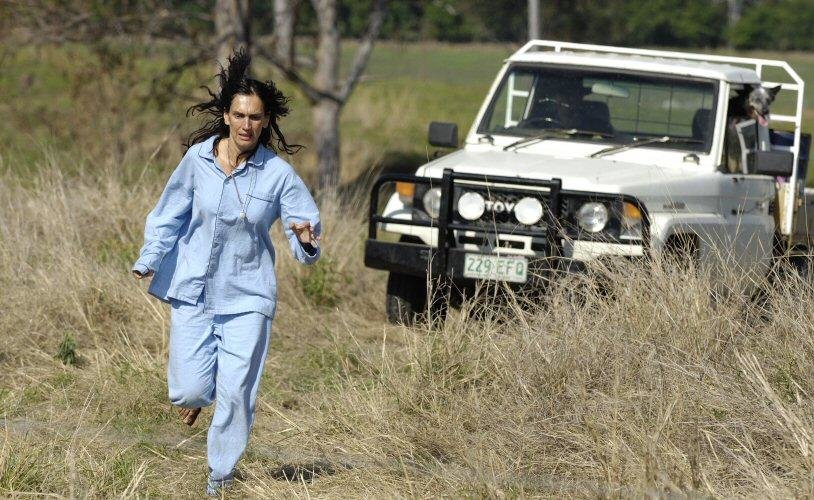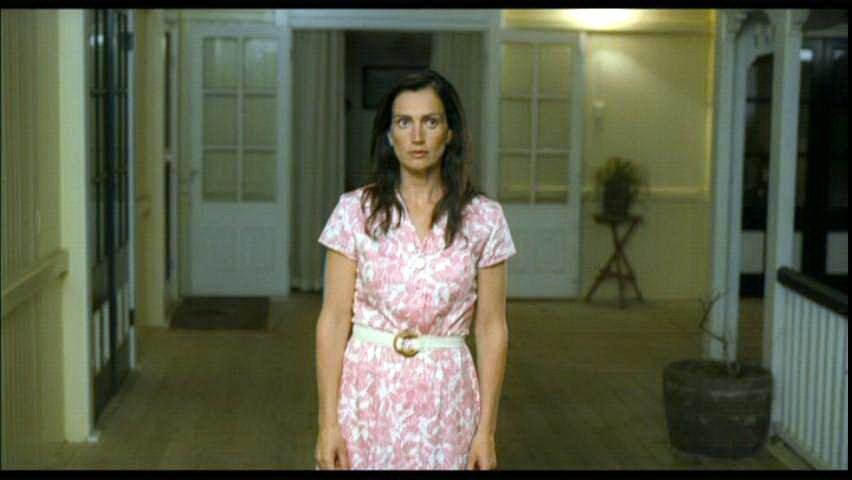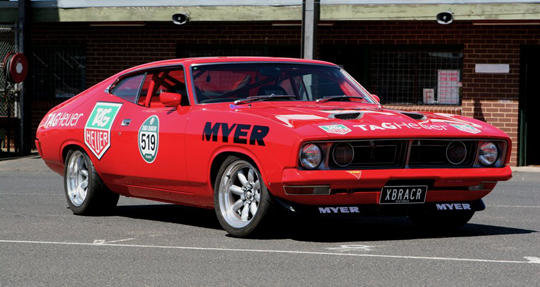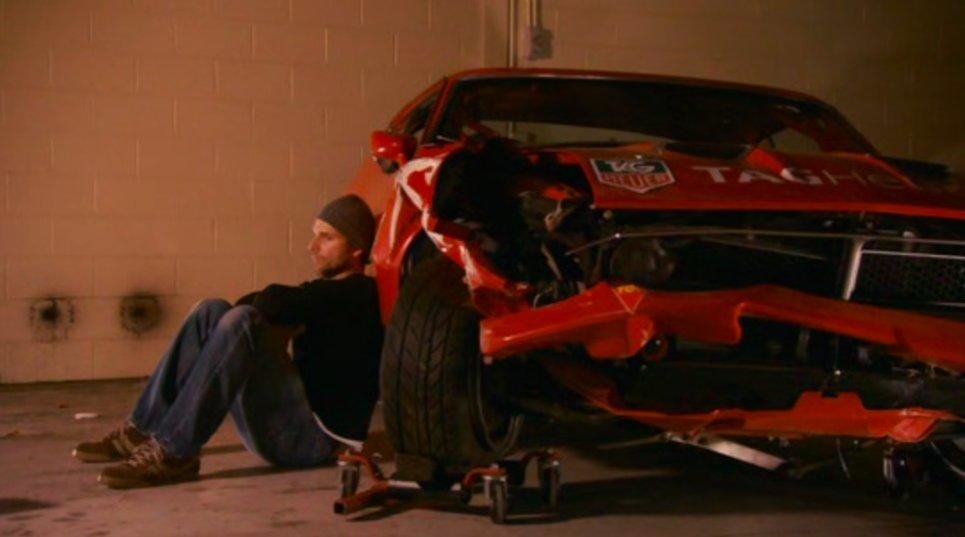For most foreigners, Australia seems a weird world that exists within its own realm of unique reality, a specific Wonderland, per se. While the given assumption does sound very poetic and inspiring, it does not come any close to what Australia actually is. A country with a unique history and a distinct tendency in its cultural evolution, Australia still faces a number of issues in the XXI century.
Despite the fact that the general direction of Australia development, i.e., multiculturalism, coincides with the demands of the globalization process, which Australia has recently become a part of, the conflicts between the urban and rural parts of the state (Kristoff 2012, para. 1), as well as the indigenous population and the descendants of immigrants, have clearly created a number of obstacles for the state development.
Although such movies as Love the beast and Unfinished sky deal with personal stories and have their unique plot lines, they also render a number of issues related to the current culture related problems of Australia, therefore, providing a very original interpretation of the Australian identity.
Although Unfinished sky, the first movie in question is less of a documentary and more of a fictional story, the problems that it analyzes do rub elbows with some of the topical issues of the present-day Australian social issues. The film tells a story of a farmer living on the outskirts of the city, in the Outback, and meets a woman escaping from a brothel. Naturally, they have a chemistry, which eventually leads to them developing a very strong bond and starting relationships.
While the drama between the lead characters does take a great chunk of the movie, it becomes clear from the very opening of the movie that its focus is not going to have as much staying power as the social issues that are going to be discussed in between the main plot evolution. Indeed, tricking the viewers into paying attention by disclosing the shocking truth about human trafficking, the movie director cannot expect that a simple romantic drama will suffice for the rest of the movie to be engaging enough.
While it is clear that, by choosing the back story for the female lead, the screenwriter tried to draw the audience’s attention to the topical issues of the XXI century, such as human trafficking, one may also argue that the key conflict of the movie serves a purpose of defining the specifics of the Australian identity.
Apart from the social issues, which the movie handles impressively well, the movie also does a very good job of defining the very essence of Australian identity solely with the help of the background. The key strength of the movie is that its director knows the advantages of a visual medium and uses them efficiently.
For example, the choice of the location for the drama to evolve in, which was obviously a deliberate move, shapes the audience’s concept of the Australian national identity in a very peculiar way. By setting the film in the Australian Outback, Peter Duncan conveys the key details of the conflict between the need to maintain an agricultural Outback lifestyle and an evident lenience towards the urban one among most of the Australians.
Thus, the gap between the Outback and the urban Australia, as well as such features of Australian identity as the combination of the indigenous cultures of local tribes and the openness towards innovations brought by numerous migrants, numerous ancestries of Australian residents, etc. are clearly identified in the movie. Unfinished sky provides a plethora of shots of the Australian Outback.

Such shots set a very high contrast with the claustrophobic pictures of the house interior, thus, conveying the key concept of the Australian identity as free-spirited, close-to-nature and unpretentious. While Duncan is clearly unwilling to portray the identity of his characters as simplistic one, he obviously contrasts it to the one of the urban residents, therefore, making the story of his characters all the more realistic by tying in the elements of fiction with the social issues of the present-day Australia.

The movie, therefore, allows to explore the peculiarities of the “islander peoples” (Recognising aboriginal and Torres Strait islander peoples in the Constitution: report of the expert panel 2012, para. 1). On the one hand, the specifics of living on an island include belonging to a very close community of people and therefore, the tendency to appreciating the significance of close relationships with the members of the community.
Indeed, according to the existing evidence, the Australian people tend to be quite dependent on their communication within the community; moreover, Australians clearly have a tendency to creating a rapport with each other within a surprisingly short amount of time, which the characters in the movie are a prime example of.
Seeing how the issue of national identity is the focus of the given paper, it is most reasonable to start with the movie that does not disperse between fiction and reality; in other words, a documentary is the most appropriate genre for analyzing the cultural specifics of a particular state with the help a such medium as movies. Love the beast, a 2009 Australian documentary sheds some light on the peculiarities of the Australian culture and national identity.
Written and starring Eric Bana, the movie tells a rather personal story of a car racer and his friends. Despite the fact that the story is told from the perspective of a real-life person, it is paced like a drama, it is positioned as a drama, and the leading character is played as if he was a part of a drama. Thus, the movie director manages to blur the line between reality and fiction, affording both disclosing a very personal story and at the same time capturing the air of the era in a bottle.

In contrast to the film described previously, the given movie is set in an urban environment, which allows for creating a three-dimensional image of an Australian person. As the plot of the movie unwinds, the audience finds out that the concept of the Australian identity is a bit more complicated than an attempt to maintain balance between the urbanism tendencies of the state capital and the country spirit of the Outback.
While little is said about the bond that most Australians have with nature, the movie explores the cultural diversity that the continent is so famous for rather successfully. To start with, the subject matter, i.e., car races, sees rather alien to the traditional Australian attractions, yet Bana manages to integrate the concept of races into the urban background so well that it becomes an integral part of the setting immediately.
One might argue that the plot of the movie, which revolves around car races, has very little to do with the concept of diversity and that the appearance of a dilemma between defining the national identity and the acceptance of foreign trends in a movie is merely a coincidence (Attwood 2005, p. 11).
Indeed, Bana seems to focus on the story of him, his friends and the car races. However, the very fact that the topic of multiculturalism was brought up so easily and practically by accident, shows that multiculturalism is an inescapable element of the Australian identity.

In many ways, the given movie renders the issue regarding the means of retaining the culture of the Australian people in the era of urbanism and the influx of immigrants, who add their own unique elements of culture and tradition to the ones of the Australian people.
According to the recent opinion poll held among the representatives of the Australian indigenous population, their key demands to their children regarding the cultural identity of the latter concerned “knowing about their cultural heritage, background and their country, being proud of their Indigenous culture” (Colquhoun & Dockery 2012, p. 8). As the given piece of information shows, the issue of cultural heritage and national identity is suspiciously topical in Australia at present.
It is remarkable how two completely different movies obviously belonging to absolutely different genres managed to define the Australian identity so well.
It could even be argued that each of the movies goes as far as identifying the problem regarding the rights of indigenous people of Australia, which has been brewing for quite a while and has finally resulted in the delivery of national apology by Kevin Rudd, seeing how the Prime Minister’s “antagonism towards any recognition or protection of Aboriginal rights was almost visceral” (Behrendt 2010, para. 1).
There is no secret that the Australian society can be defined as mixed and that the traditions valued by the people whose ancestors explored the depth of the Australian bush are weirdly compatible with the influences of the West, which Australia is currently experiencing, partially because of the increased pace of globalization and the need to establish stronger links with the native residents and make sure that the immigrants from other states will be able to coexist with the natives peacefully (Archer 2009, p. 235).
In addition, the legal issues that have been raised by the representatives of the indigenous population and have not yet been solved also deserve a mentioning: “We cannot have traditions unless we know and respect ngarra rom and mawul rom, Ngarra rom is our law. Mawul rom is the law of peace-making. We hold ngarra rom in our identity” (Recognising aboriginal and Torres Strait islander peoples in the Constitution: report of the expert panel 2012, p. xx).
Another peculiar feature of the Australian identity, which the Love the beast touches upon, and which has clearly slipped off Peter Duncan’s radar, being completely underrepresented in the Unfinished sky, the fact that the Australian culture is very young also deserves mentioning. Indeed, according to the historical records of the state, Australia as people know it nowadays, with a “melting pot” of native and foreign cultures, has emerged comparatively recently.
Although European migration to Australia dates back to the XVI century, the effects that the given process has had on the state becomes obvious only in the mid-XVIII century. More to the point, the creation of New South Wales, which would later on define the state’s economic, political and cultural progress, began late in 1788. The fact that Australia had long been used as the place to send convicts to as a means of punishment and a complete social isolation, is also worth bringing up.
Finally, the economic complexities that appeared as a result of the Great Depression, have also contributed to the creation of hitches in the process of the Australian society evolution (Rutland 1985, p. 30). Consequently, it was only in the mid-XX century that the latter was finally established (Roberts 2006, p. 15). Hence, the Australian society is surprisingly young; the given feature of the Australian people defines their identity to a considerable degree, while both movies seem to omit the given detail, whether deliberately or unintentionally.
Nevertheless, much to the directors’ credit, they managed to display the key elements of the Australian culture in a rather precise manner. What seems hardly attainable in the moviemaking industry of any other state is weirdly possible in the Australian cinema (Langton 2008, p. 148).
Though the fact that the concept of Australian national identity aligns with the plot lines of both movies might seem a coincidence, after a short research, one will be able to find out that the potential of the industry in question has been discovered by Australian directors long before.
According to Bennett and Carter, “Policy makers saw the Australian cinema as more than just a national industry servicing a self-defining national culture” (Bennett & Carter 2001, p. 19). Raising a number of social issues, the two movies not only nail down the essence of Australian identity, but also provide the answers regarding its further development.
Reference List
Archer, Robin (2010), ‘Race’ and ‘Conclusion’ in Robin Archer (ed), Why is there no Labor Party in the United States?, Princeton University Press, Princeton, NJ, pp. 49-72, 233-243.
Attwood, Bain, (2005), ‘Nation’ in Bain Attwood, Telling the truth about aboriginal history, Allen and Unwin, Sydney, pp. 11-19.
Behrendt, L. 2010, ‘Closing the evidence gap,’ Ideas Australia Needs Now. Web.
Bennett, T. & Carter, D. 2001, Culture in Australia: policies, publics and programs, CUP, Cambridge, UK.
Colquhoun, S. & Dockery, A. M. 2012, The link between Indigenous culture and wellbeing: qualitative evidence for Australian Aboriginal peoples, The Centre for labour market research, Australia, WA.
Kristoff, N. 2012, ‘Poverty’s poster child’, New York Times. Web.
Langton, M. (2008) ‘Trapped in the aboriginal reality show’, Griffith Review, 19. Web.
Love the beast damage. Web.
Love the beast headed to the States! Web.
Photos of Monic Hendrickx. Web.
Recognising aboriginal and Torres Strait islander peoples in the Constitution: report of the expert panel 2012. Web.
Roberts, David A. (2006), ‘’They would speedily abandon the country to the new comers’: the denial of Aboriginal rights’, in Roberts, DA & Crotty, M (eds) The great mistakes of Australian history, University of New South Wales Press, Sydney, pp. 14-31.
Rutland, Suzanne D. (1985) ‘Australian responses to Jewish refugee migration before and after World War II’, Australian Journal of Politics and History, vol. 31, no. 1, pp. 29–48.
Unfinished sky – Peter Duncan, William McInnes, Monic Hendrickx. Web.